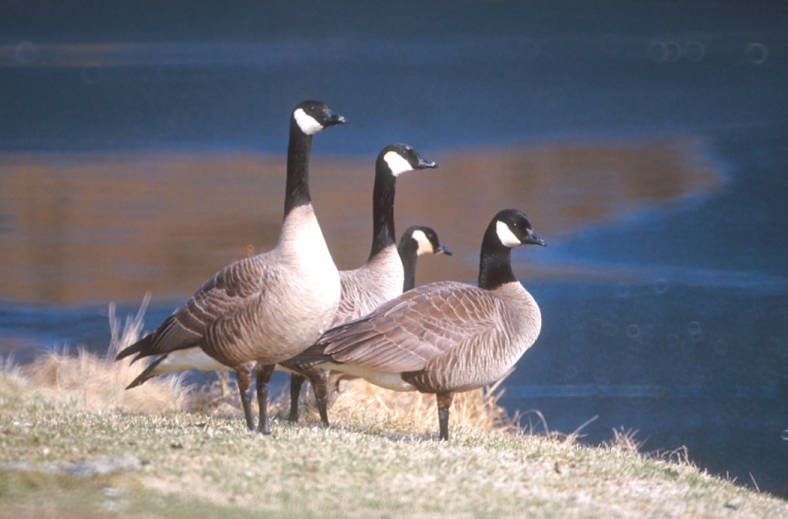
This article was republished here with permission from Great Lakes Echo.
By Anna Barnes, Great Lakes Echo
Two Pennsylvania farmers have been found guilty of poisoning over two dozen migratory birds with a restricted substance.
Robert Yost and Jacob Reese, located in Econ Valley, Pennsylvania, were found guilty in January of three charges related to poisoning 17 Canada geese, 10 red-winged blackbirds and one mallard duck, according to the U.S. Department of Justice.
The conviction is unusual, said Francesca Cuthbert, a retired professor in the Department of Fisheries, Wildlife and Conservation Biology at the University of Minnesota.
“In all the cases across the country, I think it’s pretty rare,” said Cuthbert, who has a 40-year career and a special interest in migratory birds. “It has got to be discovered. It has to be reported. It has to be, you know, deemed important.”
Yost and Reese were found guilty of violating the Migratory Bird Treaty Act and the Federal Insecticide, Fungicide and Rodenticide Act, federal officials said. They face up to 13 months in prison and a fine of $31,000.

Federal law ensures migratory birds are the most protected vertebrate other than humans. Information: Francesca Cuthbert Image: Anna Barnes
It is not common knowledge that birds protected by the Migratory Bird Treaty Act are more protected than any other animals, Cuthbert said.
“It’s illegal to possess anything about them,” she said.
Keeping a migratory bird’s carcass is illegal even if you weren’t the one to kill it, Cuthbert said. “Can’t have their feathers, can’t have their nests, can’t have their eggs, can’t take their babies and raise the babies. It’s a very, very strong law.”
Yost and Reese poisoned the birds after they shot towards them and tried to use leg traps to remove them, according to the U.S. Department of Justice, The farmers then burned the bag where the laced corn was being held and lied about spreading the corn near the soybean field.
Stephen D. Colafella of Tucker Arensberg Attorneys in Pittsburg, the defense attorney for Yost, did not respond to numerous emails requesting a comment.
Farmers consider both the Canada goose and the red-winged blackbird as a nuisance species, Cuthbert said. A nuisance species is one that may cause economic damage to farming operations by reducing crop yield through consumption.
The Environmental Protection Agency participated in the investigation, justice officials said. A risk assessment by the agency in 2007 found carbofuran to be “very highly toxic” to birds. When birds consumed the pesticide, they died, according to the study.
The use of the chemical is damaging to more than just the birds involved, Bridget Macdonald, a spokesperson for the U.S. Fish and Wildlife Service said.
The incident also put people and the environment at risk, said Macdonald. “Holding people accountable for the illegal use of restricted pesticides helps keep both wildlife and communities safe.”
Carbofuran also poses a risk for those working with or exposed to the chemical, according to the hazard summary of carbofuran by the New Jersey Department of Health and Senior Services. The agency reports that the substance’s effects include weakness, sweating, nausea, vomiting, abdominal pain and blurred vision. High levels of exposure can cause muscle twitching, loss of coordination and breathing to stop.
Yost leased the farm from a family with children who have access to the fields where the carbofuran-covered corn was spread, according to the U.S. Department of Justice.
According to the U.S. Fish and Wildlife Service, other than human and environmental risks posed by the spread of the poisonous chemical, the loss of life for migratory birds can have ecological and economic consequences.
“In general, measures to conserve birds and their habitats are good for people, too – both because we all benefit from a healthy environment and because birds provide other values,” Macdonald said. “More than 96 million people in the U.S. watch birds, and wildlife watching generates over $250 billion in economic impacts.”
Macdonald said the U.S. Fish and Wildlife Service works in agricultural settings to manage these conflicts in legal, safe and humane ways.
“If the right agency is contacted and it’s typically through the U.S. Department of Agriculture’s Wildlife Services, they exist to help mediate financial issues with any kind of wildlife,” Cuthbert said.
Many species of birds are declining in North America and many are at risk of extinction, Macdonald said. Scientists estimate 3 billion birds have been lost since 1970. Roughly 25% of the bird population has died off since the seventies.
Catch more news at Great Lakes Now:
Indiana conservation groups defend state’s wetlands that lost protection
Preserving Minnesota’s bogs could fight climate change
Featured image: 17 Canada geese were poisoned and killed by two Pennsylvania farmers. Image: Tim Bowman, U.S. Fish and Wildlife Service.




